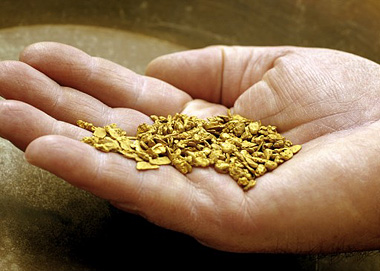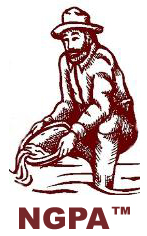Doing Your Treasure Hunting & Gold Prospecting Homework

Treasure hunting, much like other forms of hunting, comes with various degrees of success; depending on the amount and quality of preparation before the hunt. The old adage of getting out of the hunt what you put into it really applies. You do reap what you sow. No hunter exists who takes an empty or dirty rifle into a strange locale and expects to be very successful; nor should the treasure hunter do so with his detector that he hasn’t properly maintained.
While treasure hunting, whether it is coin shooting at the local school yard or jewelry hunting in the waters of swimming areas, the hunter should make certain preparations and plans before taking to the field. These selfset rules should then be observed religiously during future hunts.

First, the hunter should make up his mind what form of treasure he is going to hunt for, then he should concentrate on that type of treasure hunt. This will enable him to know the kind of detector to purchase.
After this decision has been made, he will purchase the proper detector after talking it over with a local expert in metal detectors. You can discuss at great lengths which detector will be the right one for the job you have in mind. You can’t hunt gold nuggets with a coin machine or underwater with a land seeker. Get the proper equipment. If you change your mind later and want to hunt something else you can always rent or purchase a different unit for the new job.
With the new detector, buy a complete extra set of new batteries and keep them with the unit at all times. There will come a time when you will appreciate this practice. Once that extra set of batteries is used, make sure you buy another set to replace the extras with. Always have a set of fresh batteries on hand! This is especially true in the field! Always buy the best batteries available, never cheap ones! The inexpensive batteries will not last as long as the more expensive ones. They will probably leak in the battery compartment and cause a great amount of damage. It simply pays in the long run to invest a little more in the first place. I call it cheap insurance.
After each use of the detector, I have made it a habit to remove the batteries from the unit and store the detector until the next time I need to use it again. This too keeps seepage from the batteries into the battery compartment from occurring.
The better care you give your detector, the better it will take care of you. And this brings up familiarization. The more you use a metal detector, the better you will get with it and the higher your success rate will be. When the unit passes over metal and makes the buzzing or ringing sound, the detector is trying to tell you what kind of metal you have passed over. It is up to you to learn the different sounds your detector makes and identify them. Your detector is a computer, treat it like one.
After learning to operate the detector, you will become ambitious and will start wanting to look for more expensive items. Instead of clad coins, you may want to start looking for older coins – especially silver or possibly gold. While silver coins may be found anywhere, they are much more plentiful in areas where people congregated during the period of time they were in use. Learn these places and seek them out.
Now you get into the researching of sites that might yield valuable coins. Here again, there is no substitute for hard work. It seems that each treasure hunter has a pet method of where and how to research and seek out sites. In many cases, seeking out the older people of the community will suffice. These people usually know the locations of the old church, school and other sites of the community before they were torn down and moved to the present place. This information is most valuable.
Once again, the key of doing good research is other people and the records they keep or what they may know from a personal viewpoint. If you are looking for old homesteads, there are several places you can contact – the tax office, library, land office, old copies of the local newspaper, sheriff’s office, local ministers and, as always, the older members of the community. This, of course, is also true for many other subjects of search; swimming holes of older days, finding out who owns certain property (for permission to gain access), etc…
The importance of doing your homework can not be overly stressed. This writer was personally involved in a situation where research would have saved much money for the participants.
While living in central Arizona, a good friend call ed and wanted to visit a site we had read about a few miles south of Flagstaff. This friend, who I call PullTab Arlie, lives in Spring, Texas, (north of Houston). It is a long trip to central Arizona from there but Pull-Tab used part of his well-earned vacation from his job with the railroad to come to teh state. He spared no expense in coming to my doorstep in the middle of the night.
Perhaps I should back up for a moment. The treasure we were to seek was allegedly located in an area called Mexican Pocket. The map gave its location some nine miles south of Flagstaff. We had read an account of this treasure in an old treasure magazine that came from a collection of a private collector. I will recap a bit of the story to familiarize the reader with the tale.
Let me first say that the writer of the Mexican Pocket story wrote an extremely feasible account and along with pictures set the hook for poor ol’ Pull-Tab and myself.
This is the tale of all tales. On a given date in the 1880’s, 12 Mexican bandits drove a good-sized herd of stolen horses from Mexico up through New Mexico and eventually into northern Arizona. The stolen horses were sold to American buyers. Finally the herd was all sold. The outlaws then began stealing American horses to be sold in Mexico upon their return.
A small part of the new herd was taken from a rancher close to St. Johns, Ariz. After it was reported to the local sheriff’s office, Sheriff Commodore Perry Owens gave pursuit to the owlhoots.
Trailing the horse thieves to a small park in the mountainous terrain now known as Mexican Pocket, Owens caught up with them. He went into Flagstaff where he recruited two deputies and brought them back in an attempt to arrest the Mexican outlaws. Agunfight erupted and seven of the outlaws were killed while five escaped on horses ridden bareback – they left their saddles behind due to being in somewhat of a hurry.
Of the five survivors, two were severely wounded in the shootout. They were taken by the aid of their three compadres to Phoenix. The three healthy outlaws did not remain that way very long. They got into an argument with a local deputy sheriff and tried to gun him down. It was a bad day for the Mexican outlaws since the gunslick deputy killed all three.
One of the two remaining men died before the deputy could find him. The last man lived just long enough to tell the deputy sheriff of the Mexican Pocket shootout and of the 12 sets of saddlebags the outlaws had buried there.
Word got back to Flagstaff of the buried treasure of the dead Mexicans. After searching the area, two sets of the bags were found. One held $5,000 and the second set held $8,000 in silver and gold coins. If this story didn’t set the hook then you just haven’t been paying attention.
Before moving to Arizona, I had become interested in the Mexican Pocket story. I wrote to the Flagstaff City-Coconino County Public Library, requesting available information on the location of the Mexican Pocket and received copies of maps of the area. I should have asked for information on the shootout as well, but keeping the whole thing a secret was a priority at the time.
Ol’ Pull-Tab and I made our way to Flagstaff during the middle of the night. We slept for awhile in a motel and early the next morning, after breakfast, headed to Mexican Pocket.
We spent the morning and afternoon (up to 2 p.m.) with our metal detectors searching the one-half mile wide by one mile long area. We didn’t cover all the ground, but we did cover enough to become extremely tired and hungry since we didn’t have the forethought to take food along with us.
Looking back, maybe we were going to buy lunch with all that outlaw loot we were going to find. As it turned out, we found nothing but a clad quarter and a bunch of tarnished brass rifle cartridge hulls of modern day vintage. This being a far distance from the 10 remaining sets of saddlebags we believed to be buried there. They would possibly be worth $50,000 to $80,000 face value today.
At 2 p.m., hunger pains drove the two gallant treasure hunters back to Flagstaff. Once there, I insisted on going immediately to the fore-mentionedpubliclibrary.
It took little time to pull up all the newspaper files on Sheriff Commodore Perry Owens. I found that the sheriff had been looking for an escaped prisoner near Yuma, Ariz., during the same time period that the gunfight was supposed to have occurred. Flagstaff, being located in the north end of the state, and Yuma, in the southwest corner of Arizona, made it a pretty good trick if he could have done it. I would sure like to have seen the horse he rode!
We had been taken in by an unscrupulous writer and his overly active imagination! The point is, of course, had I done my homework properly, this would have never happened. What hurts is that I could have received this information at the same time I got the directions from the library by simply adding the request to my original letter.
Today, with the options of e-mail and talking on computers, doing your homework is much faster and more proficient than ever before. You can do more in minutes than it used to take weeks to accomplish. The vast amount of information now available is at the touch of your fingertips on the Internet.
Just remember, do your homework before going to the field; it saves both time and money and very well may end up being extremely rewarding. Happy hunting fellow dreamers.

